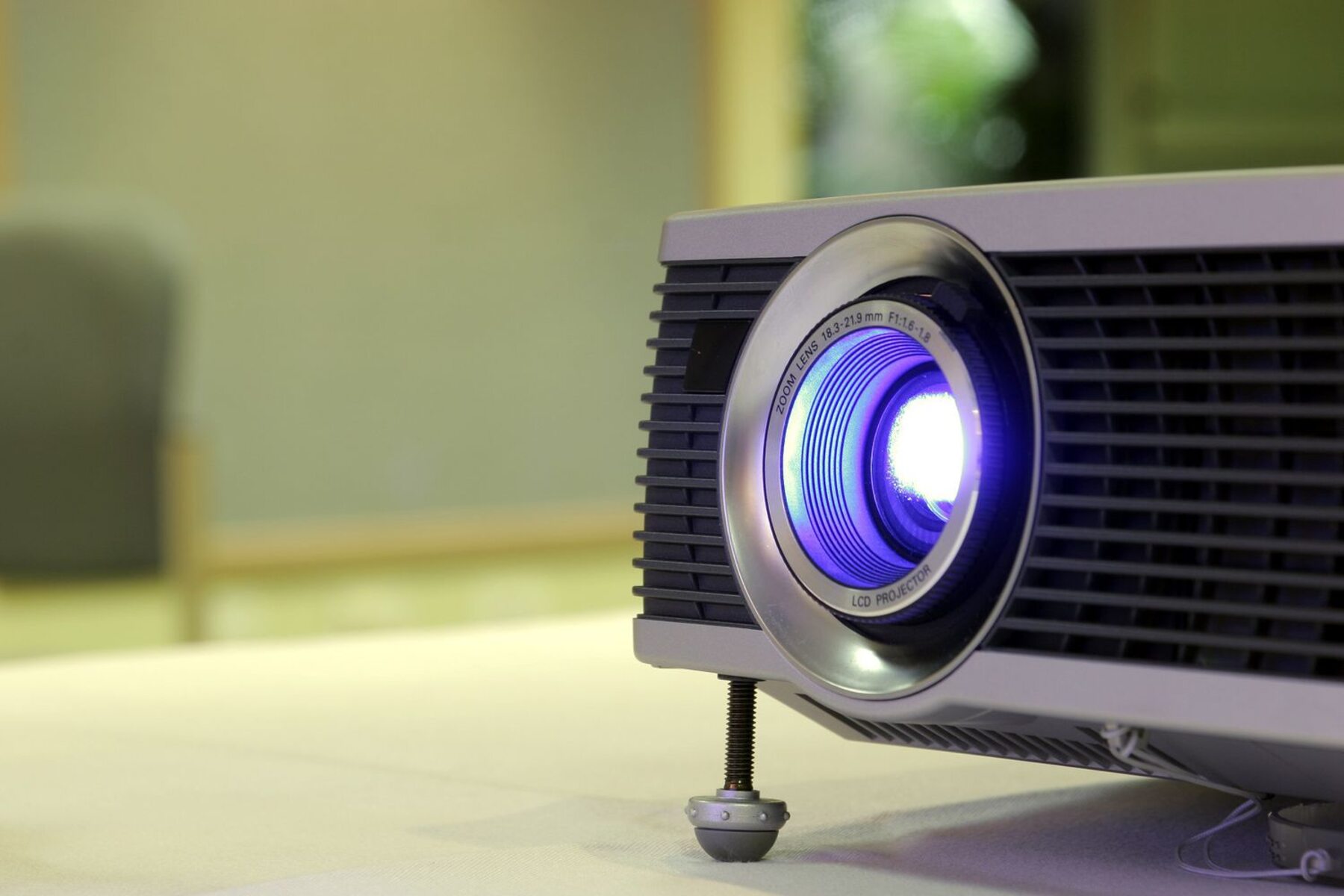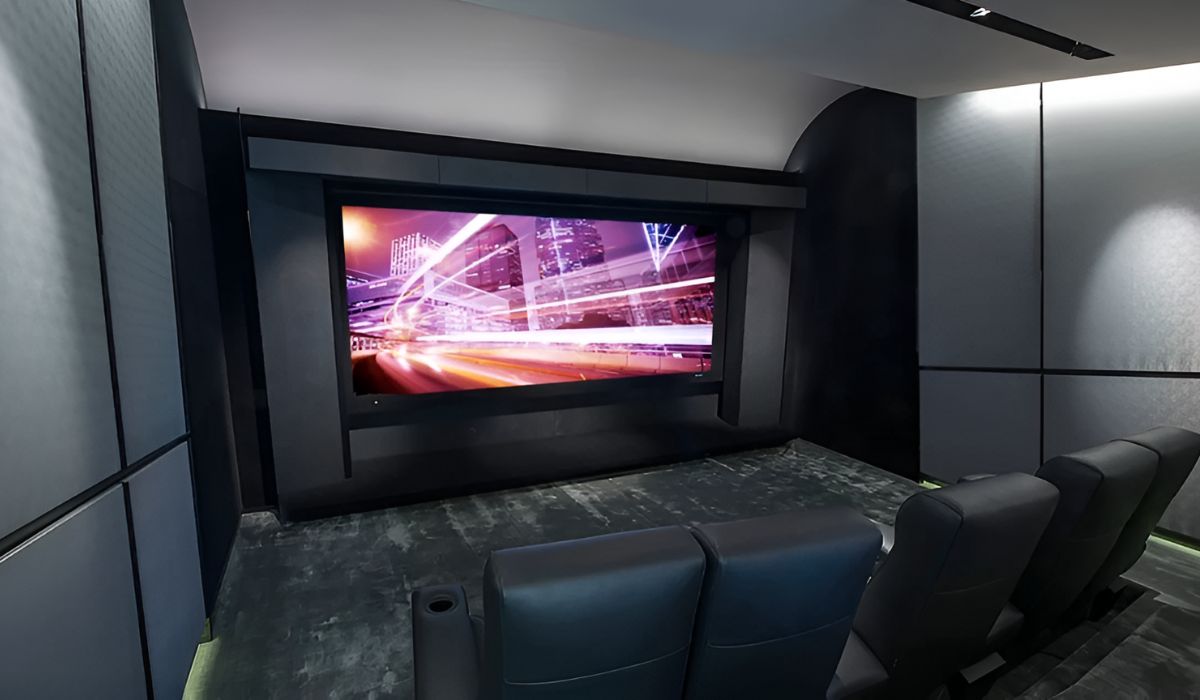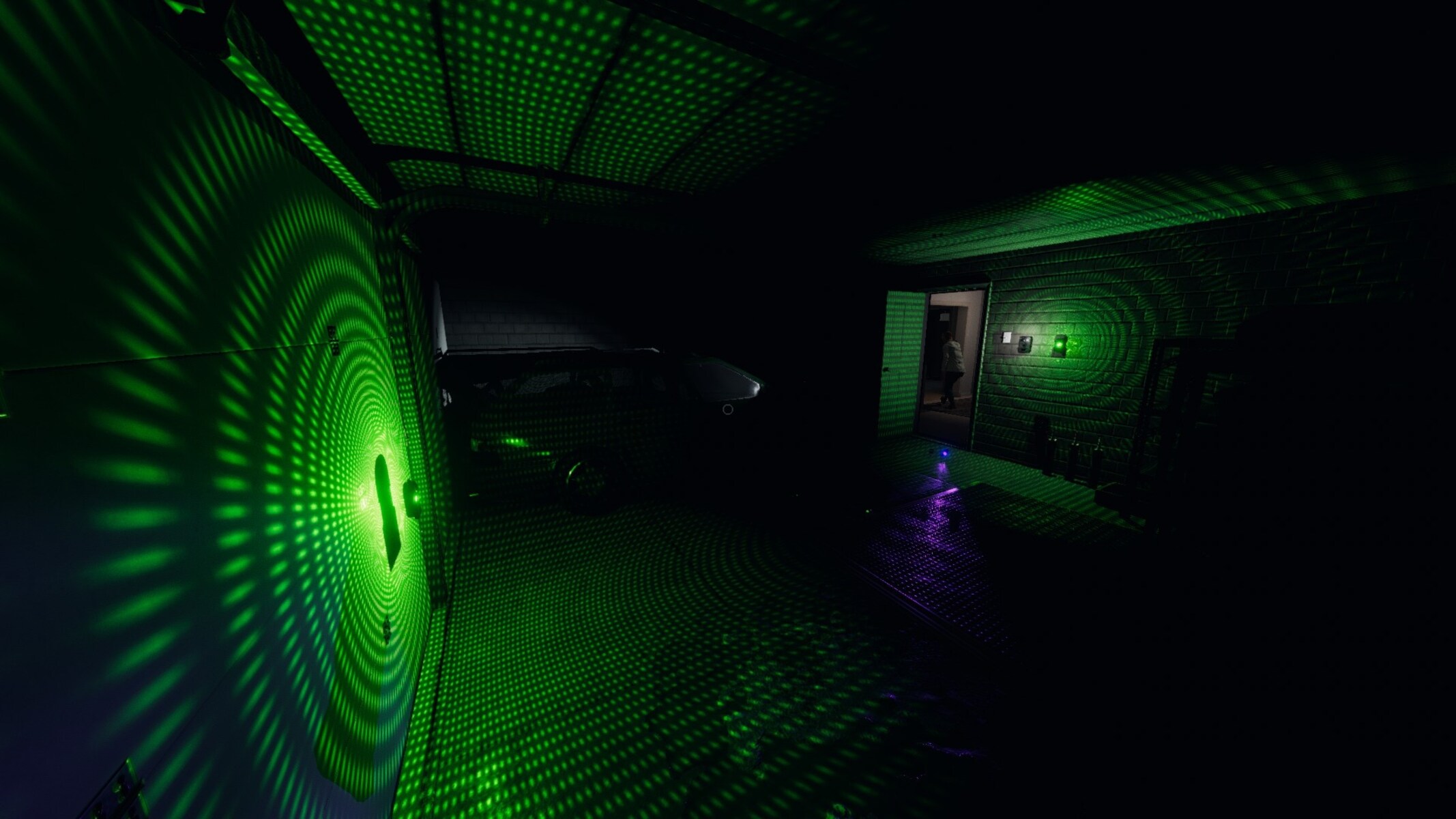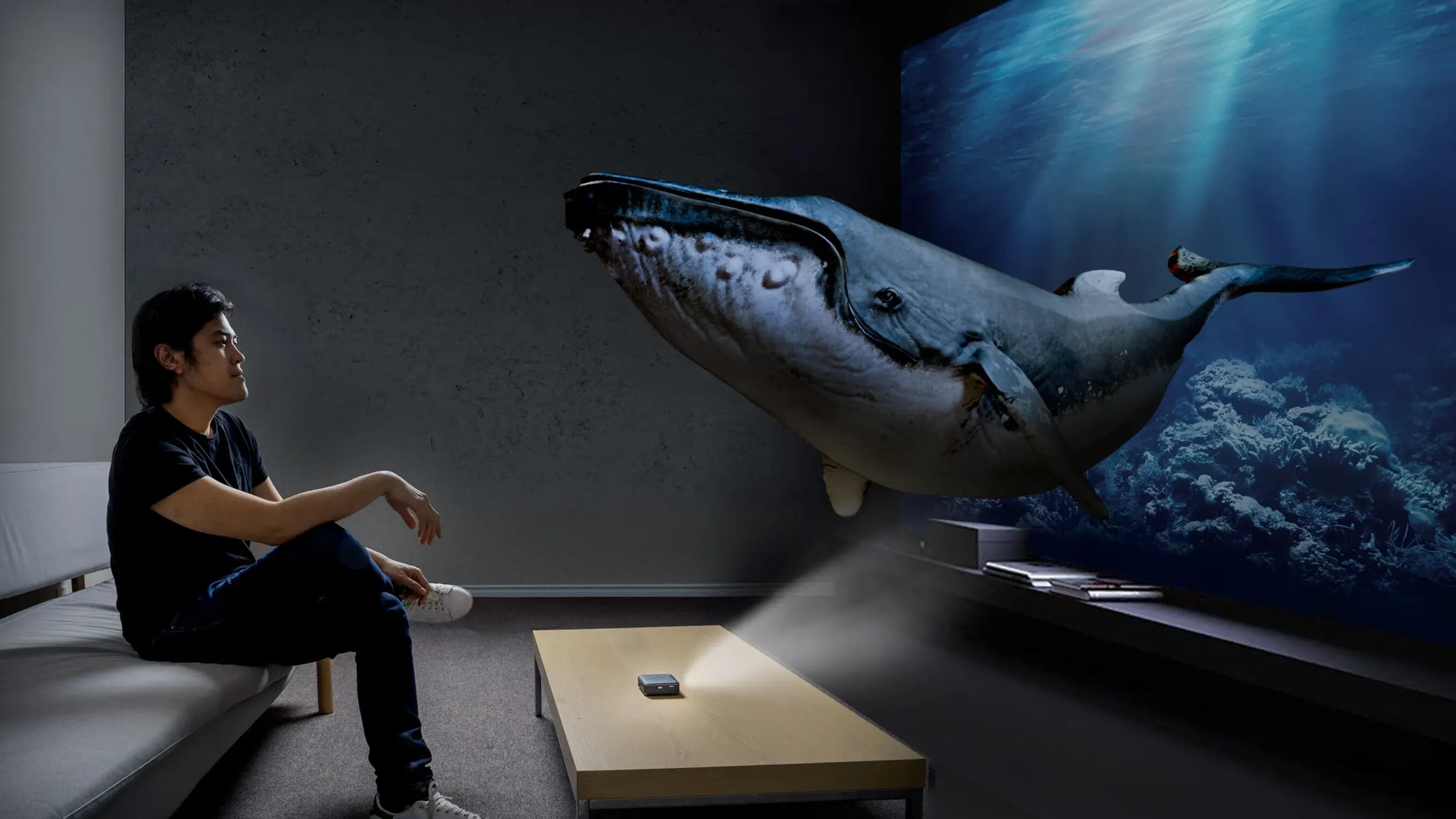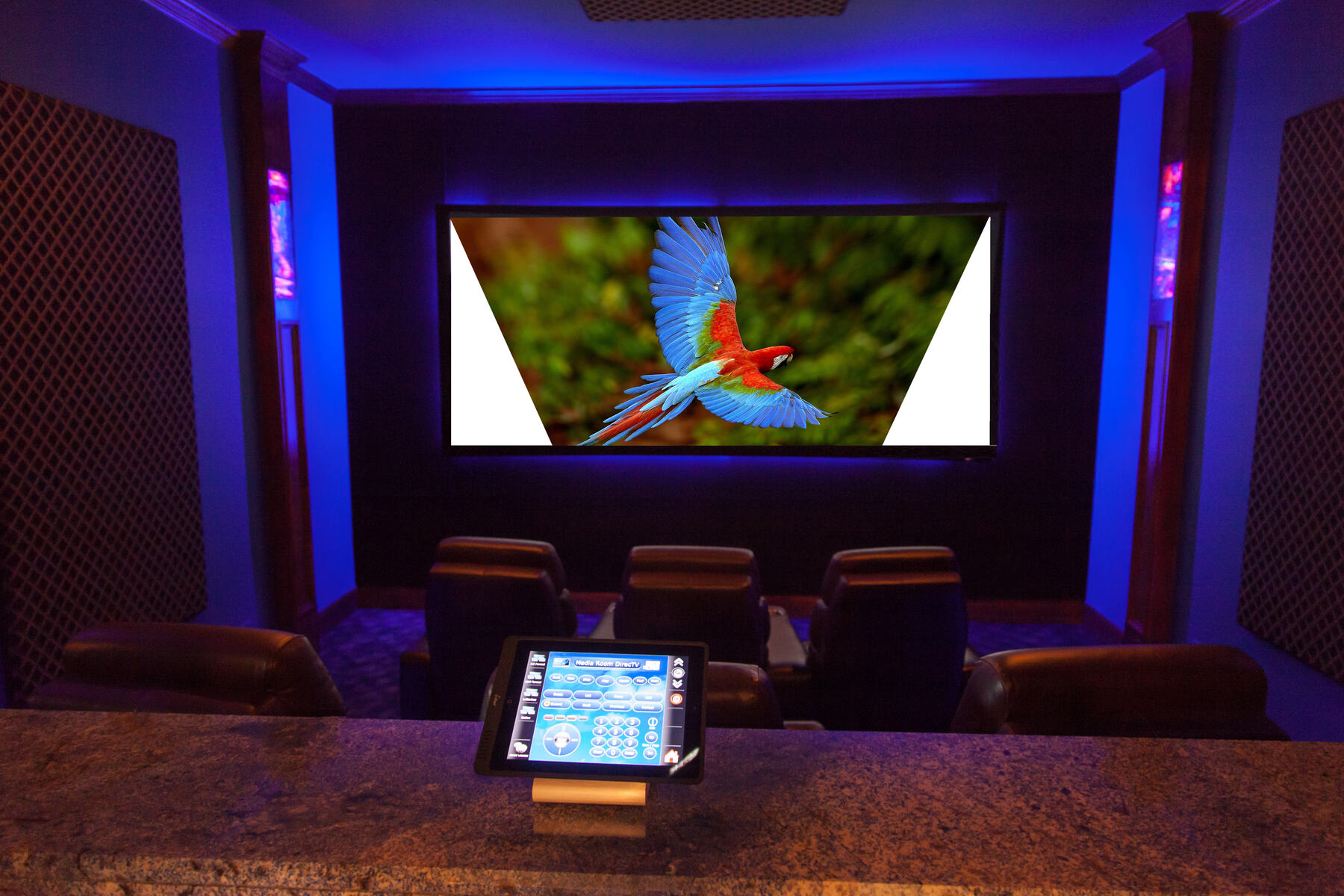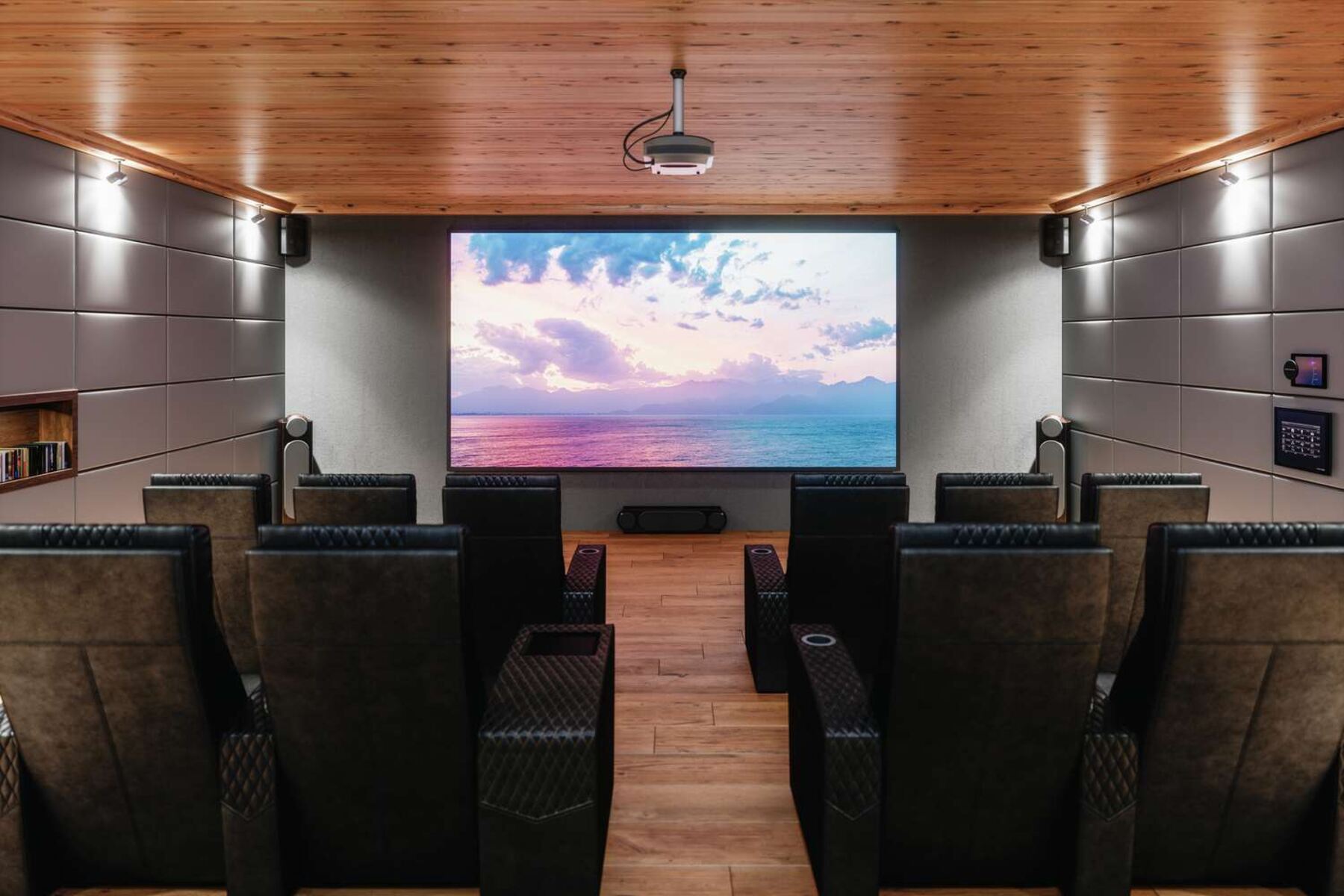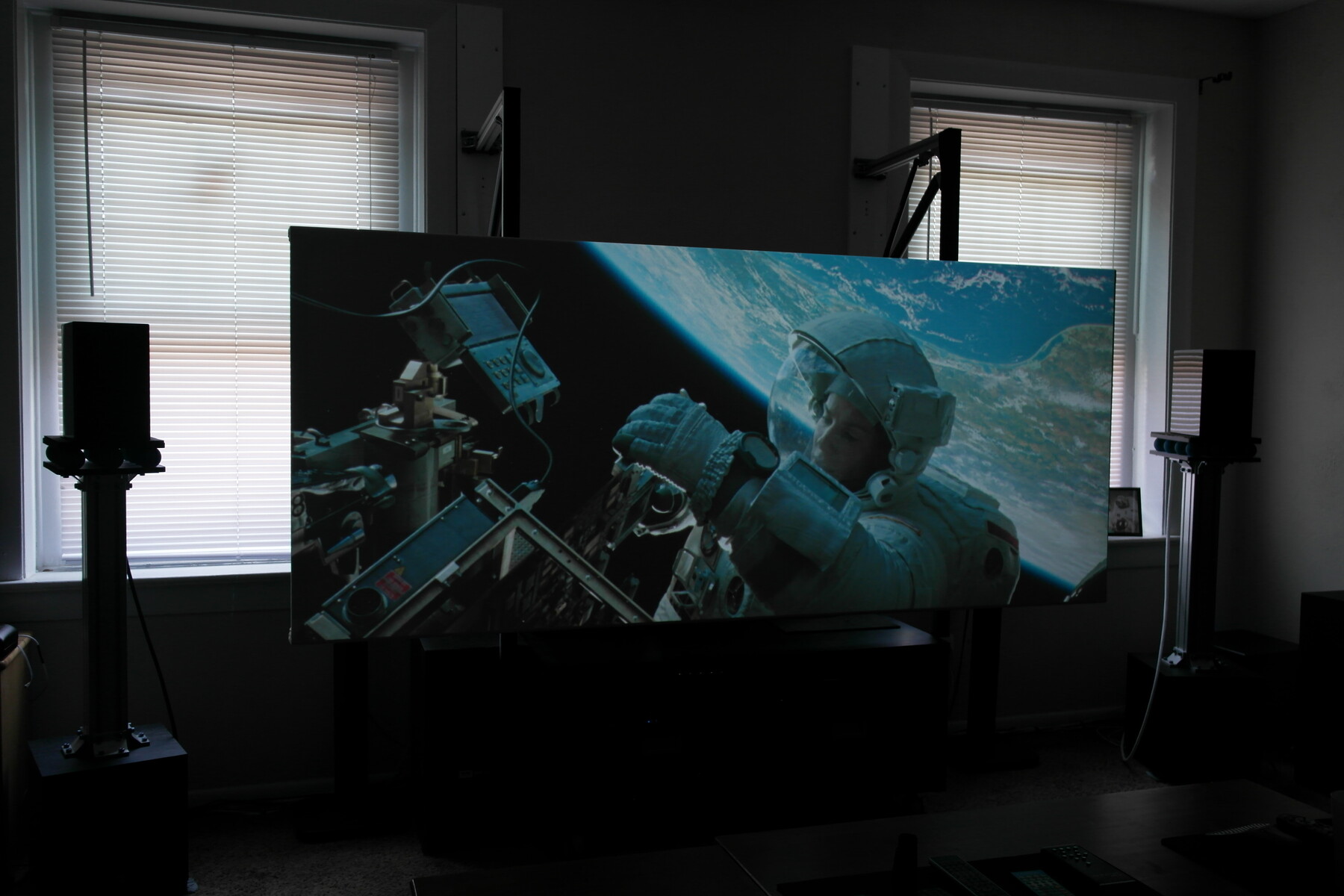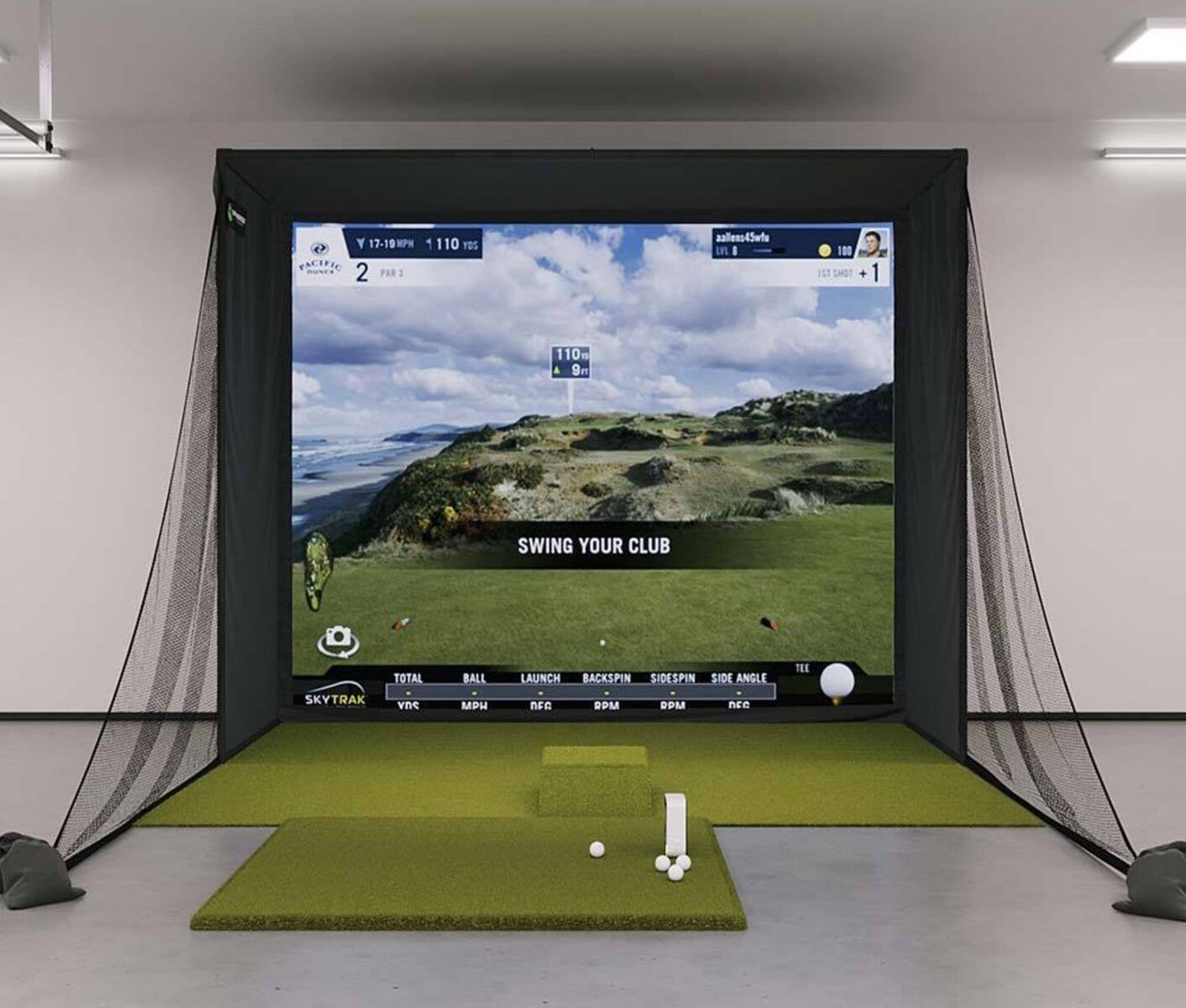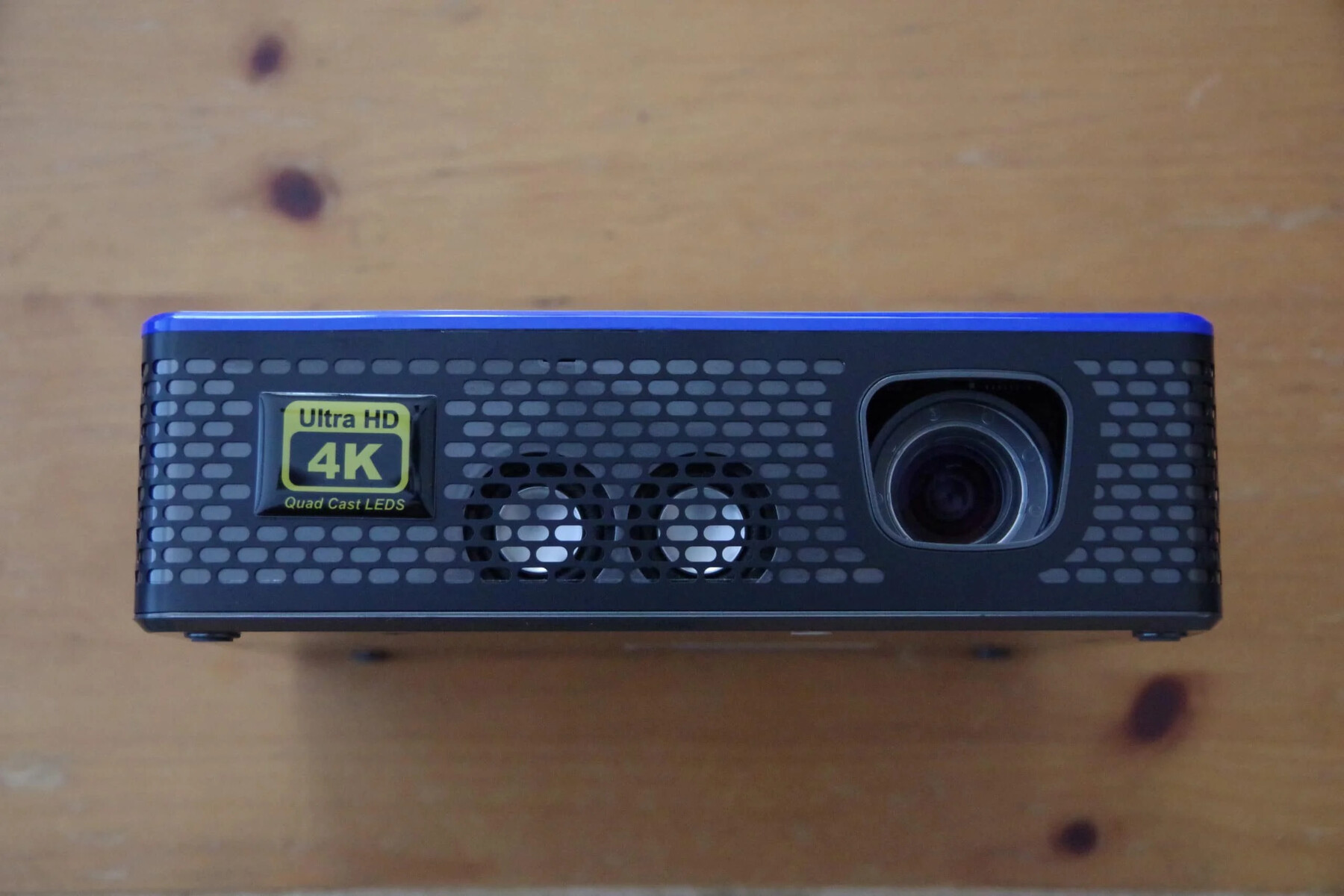Introduction
Setting up and calibrating a projector is a crucial step in ensuring optimum image quality and performance. Whether you’re using a projector for presentations, movie nights, or gaming, correct calibration can significantly enhance your viewing experience.
Understanding how to calibrate a projector involves adjusting various settings such as focus, keystone correction, color and contrast, gamma, brightness, aspect ratio, and image sharpness. By correctly configuring these settings, you can achieve a vibrant, sharp, and accurate image projection.
In this guide, we will walk you through the step-by-step process of calibrating your projector to maximize image quality. Whether you are a beginner or a seasoned user, this article will provide you with the knowledge and tips needed to obtain the best possible projection results.
Before we dive into the calibration process, it is important to note that the specific menu options and settings may vary depending on the make and model of your projector. Therefore, it is recommended to consult your projector’s user manual for detailed instructions specific to your device.
Now, let’s get started and learn how to calibrate your projector for an exceptional viewing experience.
Understanding Projector Calibration
Projector calibration is the process of adjusting various settings to ensure accurate and optimal image reproduction. A properly calibrated projector will display colors, contrast, and sharpness as intended, resulting in a more immersive and realistic viewing experience.
When a projector is manufactured, it is configured with default settings that may not be ideal for every environment. Factors such as ambient lighting, screen type, and personal preferences can affect the projection quality. Calibration allows you to tailor the projector’s settings to your specific requirements.
There are several key aspects of projector calibration that you should be familiar with:
- Focus: Adjusting the focus ensures that the image is sharp and clear. This can be done either manually or using the projector’s auto-focus feature.
- Keystone Correction: Keystone correction compensates for the distortion that occurs when a projector is angled above or below the screen’s center. It helps to maintain a rectangular image shape.
- Color and Contrast: Proper color and contrast settings are vital for accurate image reproduction. Adjusting these settings ensures that colors are vibrant and well-balanced, and that details are visible in both dark and bright areas.
- Gamma: Gamma refers to the distribution of brightness levels in an image. Calibrating the gamma helps display the correct shades of gray and provides a better balance between light and dark areas.
- Brightness: Adjusting the projector’s brightness ensures that the image is neither too dim nor too overpowering. The ideal brightness setting will depend on the ambient lighting conditions in your viewing environment.
- Aspect Ratio: The aspect ratio determines the proportions of the projected image. Selecting the correct aspect ratio avoids image distortion and ensures that the content is displayed as intended.
- Image Sharpness: Fine-tuning the image sharpness enhances the clarity and detail of the projected image. It allows for better visibility of text, graphics, and fine details.
By understanding these essential aspects of projector calibration, you will be better equipped to adjust the settings according to your specific requirements. The next section will cover the step-by-step process of calibrating your projector to achieve optimal image quality.
Step 1: Set Up the Projector
Before diving into the calibration process, it’s important to ensure that your projector is properly set up. Follow these steps to set up your projector for calibration:
- Placement: Choose an optimal location for your projector. Ensure that it is positioned at an appropriate distance from the screen or wall, depending on the throw distance of your projector model. Refer to the user manual for specific instructions.
- Screen Selection: Select the appropriate screen for your projector. Consider the screen size, gain, and material to achieve the best image quality. Ensure that the screen is clean and free from any obstructions that may affect the projection.
- Power Supply: Connect the projector to a stable power source using the provided power cable. Ensure that the power outlet is easily accessible and can support the power requirements of your projector.
- Input Source: Connect your desired input source, such as a laptop, Blu-ray player, or gaming console, to the projector using the appropriate cables. Make sure the connections are secure and that the correct input source is selected on the projector.
- Adjust Projector Height and Angle: Use the adjustable feet or mounting options to position the projector at the desired height and angle. Ensure that the projector is leveled and aligned with the center of the screen to minimize distortion.
- Check for Obstructions: Inspect the projection area for any objects or obstacles that may interfere with the projected image. Remove or reposition any items that could block or distort the projection.
- Power On the Projector: Turn on the projector using the power button or remote control. Wait for the projector to warm up and stabilize before proceeding with the calibration process.
Once you have completed these setup steps, you’re ready to move on to calibrating your projector. By ensuring that your projector is properly positioned, connected, and powered on, you lay the foundation for achieving accurate and optimal image quality.
Step 2: Adjust the Focus
Adjusting the focus of your projector is crucial to ensure a sharp and clear image. Follow these steps to properly adjust the focus:
- Display a Test Pattern: Start by displaying a test pattern or an image with fine details on the screen. This will help you accurately gauge the focus adjustments.
- Access the Focus Controls: Use the projector’s menu or dedicated focus controls to access the focus settings. This may vary depending on the make and model of your projector. Refer to the user manual for specific instructions on accessing the focus controls.
- Adjust the Focus Ring: Most projectors have a focus ring located on the lens or body of the projector. Rotate the focus ring gently to achieve the sharpest image possible. Be patient and make small adjustments until the image appears crisp and clear.
- Check the Entire Image: Pay attention to the entire image displayed on the screen, including the corners. Look for any blurriness or distortions and make further adjustments as necessary to ensure uniform sharpness across the entire projection surface.
- Use the Keystone Correction: Adjust the keystone correction settings if the image appears distorted due to angled projection. This will help maintain a rectangular image shape. However, it is best to minimize the use of keystone correction, as it can slightly degrade the image quality.
- Verify the Focus: Step back and view the projected image from your desired seating position. Ensure that the text and details are sharp and easy to read. If you are satisfied with the focus, move on to the next calibration step.
Properly adjusting the focus is crucial for achieving a sharp and clear image. Take your time during this step and make fine adjustments until you are satisfied with the focus. A crisp image will enhance the overall projection quality and provide a more immersive viewing experience.
Step 3: Adjust the Keystone Correction
Keystone correction is a feature that helps to compensate for the distortion that occurs when a projector is angled above or below the center of the screen. This step will guide you on how to adjust the keystone correction to ensure a properly aligned image:
- Display a Rectangular Test Pattern: Start by displaying a rectangular test pattern or an image with straight lines on the screen. This will help you accurately visualize any keystone distortion.
- Access the Keystone Correction Settings: Use the projector’s menu or dedicated keystone correction controls to access the adjustment settings. The specific method of accessing and adjusting keystone correction might vary based on your projector’s make and model. Consult the user manual for detailed instructions.
- Adjust the Keystone Correction: In the keystone correction settings, you will typically find options to adjust both vertical and horizontal keystoning. Gradually adjust the sliders or arrows until the projected image appears as a perfect rectangle or aligned with the screen’s edges.
- Avoid Excessive Keystone Correction: While keystone correction can help correct distortion, it is recommended to minimize its use as much as possible. Excessive keystone correction can slightly degrade image quality, resulting in a slight loss of detail and sharpness. Aim to position the projector as close to the center of the screen as possible to minimize the need for correction.
- Check the Entire Image: After making keystone adjustments, carefully observe the entire projected image, paying attention to the corners. Ensure that there are no noticeable distortions or trapezoid-like shapes. If needed, make further adjustments until the projected image is rectangular and properly aligned.
- Recheck Focus: Following keystone correction adjustments, double-check the focus of the projected image. Keystone adjustments can sometimes impact focus. Make any necessary fine-tuning to bring back optimal sharpness and clarity.
By adjusting the keystone correction, you can compensate for any distortion caused by the projector’s positioning. This will help ensure a properly aligned and rectangular image, enhancing the overall visual experience of your projected content.
Step 4: Adjust the Color and Contrast
Properly adjusting the color and contrast settings of your projector is essential for achieving accurate and vibrant image reproduction. Follow these steps to adjust the color and contrast settings:
- Display a Calibration Image: Start by displaying a calibration image or a reference image that contains a variety of colors and shades. This will help you assess the accuracy of the color and contrast settings.
- Access the Color and Contrast Controls: Use the projector’s menu or dedicated color and contrast controls to access the adjustment settings. Refer to the user manual for specific instructions on accessing and navigating these controls.
- Adjust the Color Settings: Begin by adjusting the color temperature or color balance settings. This allows you to adjust the overall color representation and warmth of the image. Make minor adjustments to achieve a natural and pleasing color balance.
- Adjust the Contrast Settings: Next, adjust the contrast settings to optimize the difference between the darkest and brightest parts of the image. Increase the contrast to enhance the image’s depth and overall visual impact, but avoid overdoing it to prevent loss of detail in dark or bright areas.
- Use Reference Images: Display reference images or videos that contain a range of colors and gradients. Observe these reference images carefully to ensure that no color banding, washed-out colors, or oversaturated hues are present. Make further adjustments as needed to achieve accurate color reproduction.
- Perform Fine-Tuning: Fine-tune the color and contrast settings based on your personal preferences and the specific content you plan to project. Take your time to find a balance that provides accurate colors and optimal image clarity.
- Consider Ambient Lighting: Keep in mind the ambient lighting conditions of your viewing environment. Adjust the color and contrast settings accordingly to compensate for any impact on the projected image. Brighter environments may require increased contrast and brightness, while darker environments may benefit from lower contrast and adjusted color temperature.
By properly adjusting the color and contrast settings, you can ensure accurate and vibrant image reproduction. Take your time to fine-tune these settings until you achieve the desired color accuracy, contrast level, and overall visual impact.
Step 5: Calibrate the Gamma
Calibrating the gamma settings of your projector is essential for achieving accurate brightness and contrast levels across different shades of gray. Follow these steps to calibrate the gamma on your projector:
- Display a Gamma Test Pattern: Start by displaying a gamma test pattern that contains a gradient of gray shades. This pattern helps you assess the brightness and contrast levels across different gray tones.
- Access the Gamma Adjustment Menu: Use the projector’s menu or dedicated gamma adjustment controls to access the gamma settings. Consult the user manual for specific instructions on accessing and navigating these controls.
- Adjust the Gamma Curve: Begin by selecting a gamma preset or curve that aligns with your viewing preferences. Most projectors offer multiple preset gamma options such as 2.2, 2.4, or even custom gamma curves. Choose a preset that suits your needs or experiment with the custom gamma curve to achieve the desired results.
- Observe the Gamma Test Pattern: Display the gamma test pattern again after selecting a gamma setting. Observe the gradient from darker to lighter gray shades. The image should display smooth transitions without any noticeable jumps or abrupt changes in brightness.
- Make Further Adjustments: If the gamma test pattern exhibits any irregularities or if you prefer a different gamma response, make further adjustments. Some projectors offer individual adjustments for different parts of the grayscale. Fine-tune the gamma settings to achieve a smooth and uniform distribution of brightness across the entire grayscale.
- Consider Viewing Environment: Take into account the lighting conditions and the specific content you plan to project. Adjust the gamma settings to compensate for any impact on the image visibility and detail. Brighter environments may benefit from adjusting the gamma towards higher values, while darker environments may require adjustments towards lower values.
- Verify Gamma Calibration: Display various types of content, such as movies, graphics, or presentations, to verify the impact of the gamma calibration. Observe the overall brightness, shadow details, and contrast levels to ensure that the gamma calibration provides a balanced and natural image quality.
By calibrating the gamma settings on your projector, you can ensure accurate and consistent brightness and contrast levels across different shades of gray. This will enhance the overall image quality and provide a more visually pleasing viewing experience.
Step 6: Fine-Tune the Brightness
Fine-tuning the brightness setting of your projector is crucial for achieving optimal image visibility and clarity. Follow these steps to properly adjust the brightness:
- Display a Test Image: Start by displaying a test image or content that represents your typical viewing material. This can be a movie scene, a presentation slide, or any other content that reflects your intended use.
- Access the Brightness Controls: Use the projector’s menu or dedicated brightness controls to access the adjustment settings. Consult the user manual for specific instructions on accessing and navigating the brightness controls.
- Adjust the Brightness: Gradually adjust the brightness setting to achieve a balance between visibility and comfort. Increase the brightness if the image appears too dark or lacks detail. Decrease the brightness if the image appears too bright or washed out.
- Consider Ambient Lighting: Take into account the ambient lighting conditions in your viewing environment. Brighter environments may require higher brightness settings to compensate for the additional light. Lower the brightness if you are watching in a dimly lit or dark environment.
- Prevent Oversaturation: Be mindful not to set the brightness too high, as it may result in oversaturated images or loss of detail in bright areas. Strive for a balance where the image maintains clarity and detail without sacrificing visual comfort.
- Verify Image Clarity: Observe the test image after making brightness adjustments. Ensure that the details in both dark and bright areas are clearly visible. Look for any loss of detail or excessive brightness that could hinder the overall image quality.
- Consider the Content: Take into account the specific type of content you plan to project. Brightness requirements may vary depending on whether you are watching movies, presenting slides, or playing games. Adjust the brightness accordingly to optimize the visual experience for your specific content.
- Make Fine-Tuning Adjustments: If needed, make further fine-tuning adjustments to ensure the optimal balance between brightness and detailed image representation. It’s important to find the right brightness setting that enhances the image quality without causing any discomfort.
By properly fine-tuning the brightness setting on your projector, you can ensure optimum image visibility and clarity. Take your time to make incremental adjustments, considering the ambient lighting conditions and the specific content you plan to project for the best possible viewing experience.
Step 7: Test and Adjust the Aspect Ratio
Testing and adjusting the aspect ratio is essential to ensure that the projected content is displayed in its intended proportions without any distortion. Follow these steps to test and adjust the aspect ratio:
- Display Various Content: Test the aspect ratio settings by displaying different types of content, such as movies, slides, or images, that have known aspect ratios. This will help you assess any potential distortion or stretching.
- Access the Aspect Ratio Settings: Use the projector’s menu or dedicated aspect ratio controls to access the adjustment settings. Refer to the user manual for specific instructions on accessing and navigating the aspect ratio controls.
- Select the Correct Aspect Ratio: Choose the appropriate aspect ratio option based on the content you are projecting. Common aspect ratios include 4:3 (standard), 16:9 (widescreen), and 1.85:1 or 2.35:1 (cinemascope). Select an aspect ratio that matches the content’s original aspect ratio.
- Observe the Content: Pay close attention to any distortion or stretching of the image caused by the aspect ratio. Look for any subjects or objects that appear too tall or too wide and adjust the aspect ratio accordingly.
- Consider Zoom Settings: If your projector allows for zoom adjustments, it can further impact the aspect ratio. Ensure that the zoom settings align with the selected aspect ratio to avoid additional distortion or cropping of the image.
- Test Different Aspect Ratios: Experiment with different aspect ratio options to find the one that best suits the content you frequently project. Adjusting the aspect ratio will ensure that movies, presentations, or other content are displayed as intended, without any noticeable distortion or loss of information.
- Consider Compatibility: When using external devices or sources, such as Blu-ray players or gaming consoles, ensure that their aspect ratio settings are compatible with the projector’s aspect ratio. This will help maintain the correct proportions of the displayed content.
Testing and adjusting the aspect ratio of your projector is crucial for displaying content correctly, without any distortion or stretching. Take the time to find the appropriate aspect ratio setting based on the nature of your content, and ensure compatibility with external devices for optimal viewing experience.
Step 8: Fine-Tune the Image Sharpness
Fine-tuning the image sharpness on your projector can greatly enhance the clarity and detail of the projected content. Follow these steps to achieve optimal sharpness:
- Display High-Quality Content: Start by displaying high-quality, detailed content, such as images or text with fine lines, to serve as a reference for adjusting sharpness.
- Access the Sharpness Settings: Use the projector’s menu or dedicated sharpness controls to access the adjustment settings. Consult the user manual for specific instructions on accessing and navigating the sharpness controls.
- Find the Default Setting: Locate the default sharpness setting on your projector. This provides a baseline reference point for fine-tuning the sharpness.
- Make Incremental Adjustments: Begin by making small adjustments to the sharpness setting. Increasing sharpness can enhance the edge definition and overall detail in the image, while decreasing sharpness can help reduce any unnatural artifacts or noise.
- Observe the Image: Carefully observe the impact of each adjustment on the image. Look for any improvement in the clarity of fine details, such as text or intricate patterns. Avoid excessive sharpening, as it can introduce unwanted artifacts and make the image appear harsh or overly processed.
- Consider Viewing Distance: Take into account the intended viewing distance for your projected content. Adjust the sharpness settings to optimize visibility and detail based on the typical distance between the projector and the audience.
- Test Various Content Types: Display different types of content, such as photographs, videos, or graphs, to assess the sharpness across a variety of visual elements. Make further adjustments as needed to ensure consistent sharpness for different content types.
- Calibrate for Specific Content: Fine-tune the sharpness settings based on the specific content you frequently project. Adjusting sharpness can enhance the readability of text, the clarity of graphics, and the overall visual impact of your content.
Fine-tuning the image sharpness on your projector can significantly enhance the visual experience. By making incremental adjustments and carefully observing the impact, you can achieve optimal sharpness and bring out the intricate details in your projected content.
Step 9: Review and Make Final Adjustments
After completing the previous calibration steps, it’s important to review the settings and make any necessary final adjustments to ensure the best possible image quality. Follow these steps to review and finalize your projector’s calibration:
- Take Time to Evaluate: Step back and spend some time evaluating the overall visual quality of the projected image. Consider factors such as color accuracy, contrast, brightness, sharpness, and aspect ratio alignment.
- Adjust Individual Settings: If you notice any particular aspect that needs improvement, revisit the corresponding calibration settings to fine-tune them. For example, if the colors appear slightly off, make minor adjustments to the color temperature or balance.
- Consider External Factors: Take into account external factors that may affect the projected image, such as ambient lighting changes or different content sources. Make necessary adjustments to compensate for any variations in the viewing environment.
- Refer to User Manual: If you encounter specific issues or have questions about advanced settings, refer to the user manual or consult online resources specific to your projector model. The manual can provide additional guidance on advanced calibration options that may be available.
- Utilize Calibration Tools: If you have access to calibration tools, such as colorimeters or calibration software, consider using them to fine-tune your projector’s settings even further. These tools can provide more accurate measurements and help achieve professional-level calibration.
- Take Notes: Make note of the final settings you decide on during the calibration process. This will allow you to reference them later or easily return to the calibrated settings if they are accidentally altered.
- Periodically Revisit Calibration: Over time, the projector’s settings may need readjustment due to factors like lamp aging, changes in external conditions, or firmware updates. Periodically revisit the calibration process to ensure ongoing optimal performance.
By carefully reviewing and making any necessary final adjustments, you can fine-tune your projector’s settings to achieve the best possible image quality. Regular calibration allows you to maximize your viewing experience and maintain consistent performance over time.
Conclusion
Calibrating your projector is a fundamental step in ensuring optimal image quality and a superior viewing experience. By following the step-by-step calibration process outlined in this guide, you can achieve accurate color representation, sharpness, contrast, and aspect ratio alignment.
Through setting up your projector correctly, adjusting the focus, keystone correction, color and contrast, gamma, brightness, aspect ratio, and image sharpness, you can optimize the visual performance and bring out the best in your projected content.
Remember to consider external factors, such as ambient lighting conditions and content sources, while making adjustments. Calibration is not a one-time task; periodic reevaluation and fine-tuning may be necessary to maintain optimal performance and adjust for changes over time.
By consulting your projector’s user manual and exploring advanced calibration options or utilizing calibration tools, you can further enhance the accuracy and precision of your projector’s image reproduction.
Take your time during the calibration process and trust your eyes as the final judge. The goal is to achieve a balanced and visually pleasing image that complements your specific viewing environment and personal preferences.
With a properly calibrated projector, you can enjoy movies, presentations, gaming, and other content with vibrant colors, sharp details, and accurate image reproduction.
So, follow the steps outlined in this guide, immerse yourself in a captivating visual experience, and explore the full potential of your projector’s capabilities.







